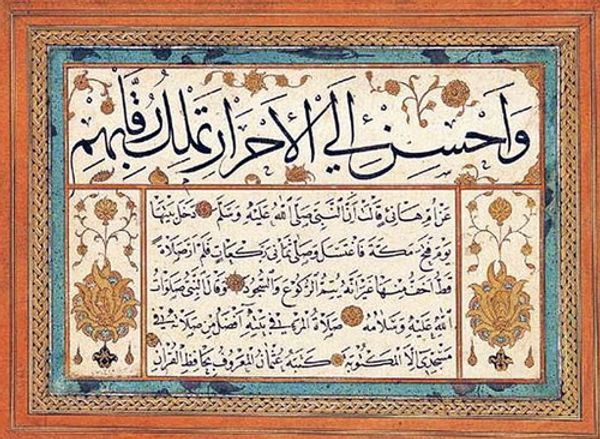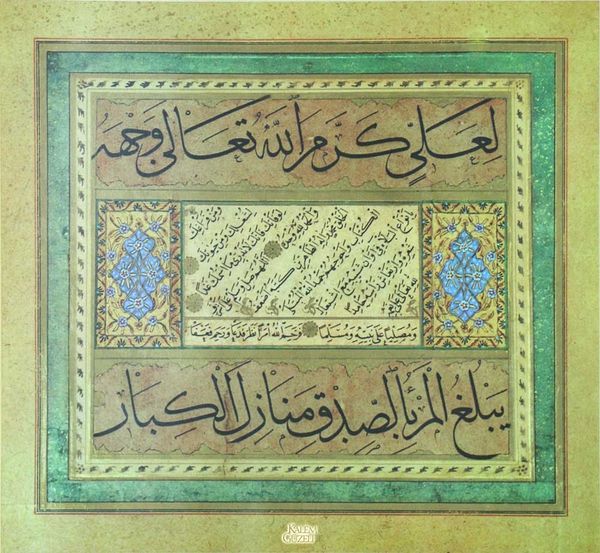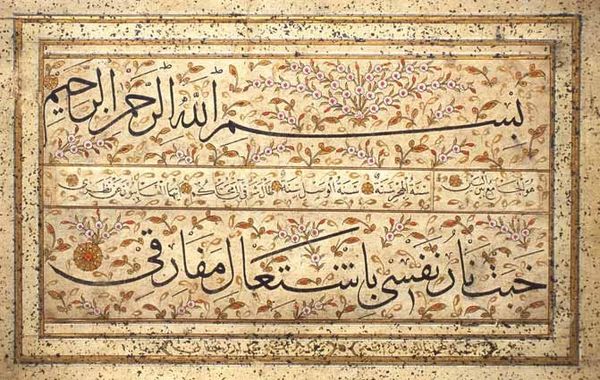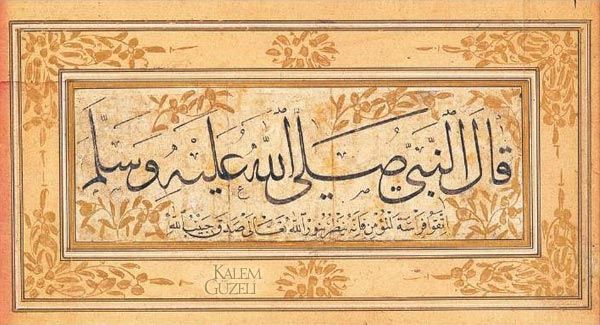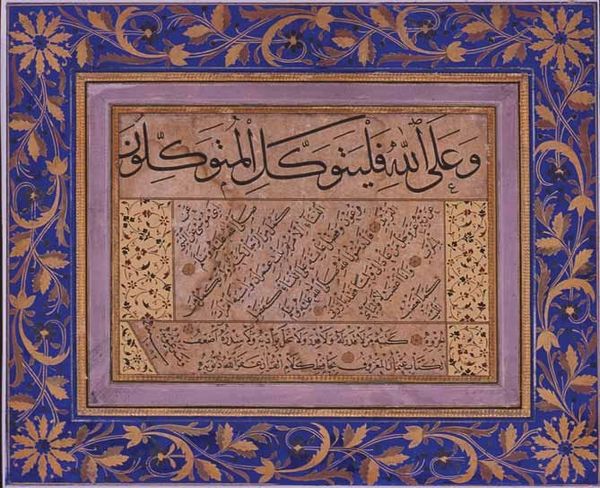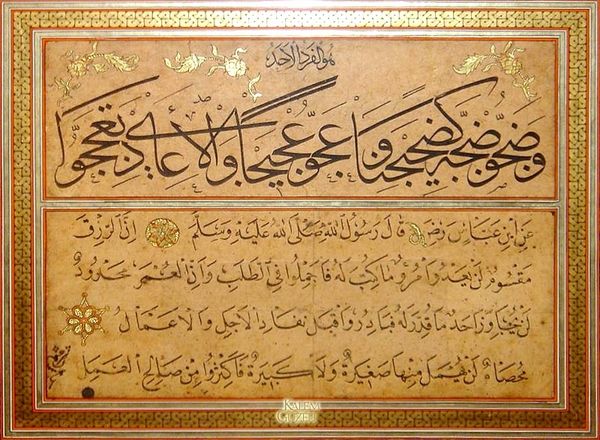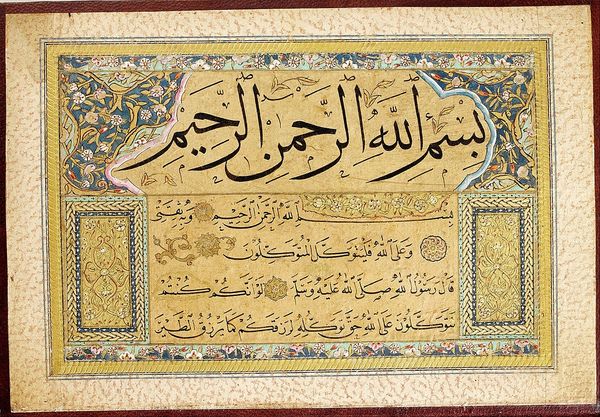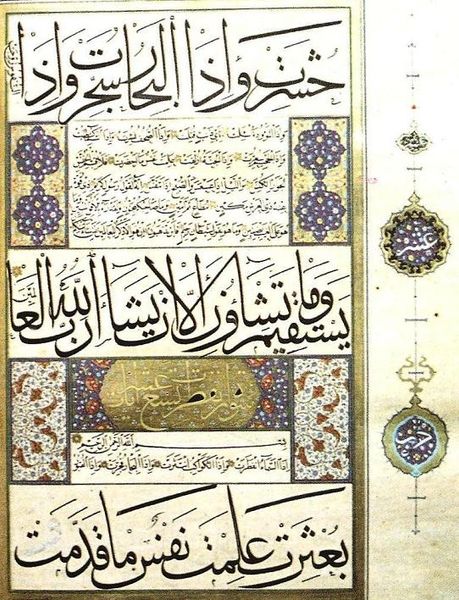
paper, ink
#
hand-lettering
#
hand lettering
#
paper
#
text
#
ink
#
abstraction
#
islamic-art
#
calligraphy
Copyright: Public domain
This is a calligraphic artwork by Mustafa Rakim, who was born in 1757 and died in 1826. During his lifetime, the Ottoman Empire was going through a period of reform and westernization. Rakim, as one of the most influential Ottoman calligraphers, would have been at the heart of this transition. His work reflects the aesthetic values of the Ottoman court, where calligraphy was not merely a form of writing but a revered art form that conveyed spiritual and cultural meanings. The script, likely in the Thuluth or Naskh style, is indicative of Rakim’s mastery, and the layout suggests a deep understanding of traditional Islamic art principles. As an artwork it also reflects the artist's identity, shaped by his devotion to his craft, his religious beliefs, and his connection to the broader Islamic community. It serves as a testament to the enduring power of faith, art, and cultural heritage in a rapidly changing world.
Comments
No comments
Be the first to comment and join the conversation on the ultimate creative platform.
